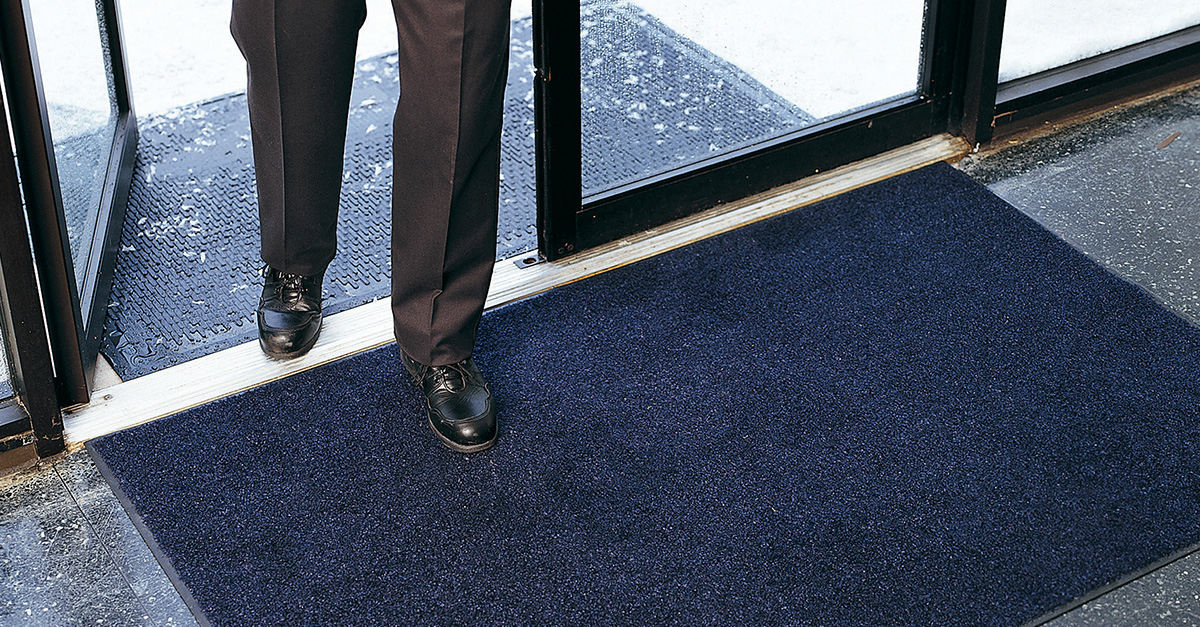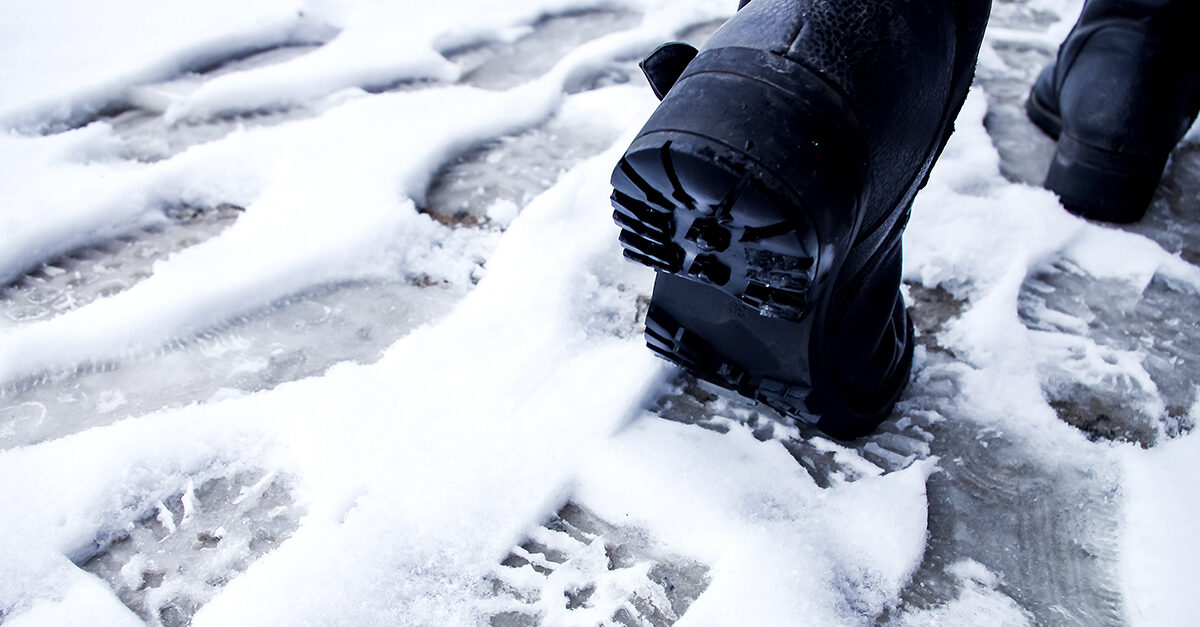Winter can be a challenging time to maintain floors for many facilities. The increased amount of salt, sand, snow, ice, and debris can quickly make a facility look dirty if facility managers don’t take preventative measures. Ice-melting products can also ruin the finish on floors and reduce the life of carpet and tile if not properly cared for.
To combat these issues, it’s important to implement a comprehensive mat system that can help stop winter weather elements from being tracked through a facility. In fact, if a facility doesn’t have proper matting, more than 40% of its floor’s finish can be removed up to six feet from the entrance way after just 1,500 visitors have entered. Additionally, mats provide a place to wipe feet to help reduce the amount of germs brought into a facility. A study conducted by a professor at the University of Arizona and the Rockport Company found the average outside of a shoe can contain 421,000 units of bacteria.
Focus on entrance zones
For winter weather issues, your main focus should be on entrances to protect your floors. A robust mat system acts as the first line of defense because it can capture and absorb dirt, debris, water, and ice-melting products before entry. It’s more time-efficient and cost-effective to clean matting than it is to constantly clean floors and entryways. Implement a dual-mat system that includes a scraper mat placed outside to complement a carpet mat placed inside. This matting system helps to reduce the amount of moisture and debris entering a facility. You should place a dual-mat system at every entrance of a building, not just the main entrance.
When selecting a scraper mat to place outside, there are many options to choose from in different price ranges. All scraper mats are designed to help remove water and debris before entering a building. Higher-end options feature blades to help scrape moisture and debris off shoes with each step. Some also contain deep channels and drainage holes that help keep moisture away for good. Ensure the scraper mat has a textured backing to increase grip performance to help it stay in place.
After selecting a scraper mat, select an entrance mat for indoor floor protection. A basic nylon mat will help capture dirt and debris that enters a facility. Additional options include higher-quality mats formulated with advanced microfibers to help capture and hold more water. These mats are designed using multiple-sized, fast-drying fibers that work together to grab fine particles from shoes and quickly evaporate moisture.
Lastly, choose a mat size that is large enough to cover your entryway and provide several feet of matting to ensure people have a sufficient area to wipe their feet. In snowy conditions, it is recommended people take 10 to 12 steps on mats at entrances to knock off dirt and debris. In addition, ensure all mats are certified by the National Floor Safety Institute.

Image courtesy of Cintas
Maintenance: To purchase or rent?
Regular mat maintenance is crucial for optimal performance of your matting system. If not properly cared for, mats can become saturated, soggy, produce foul odors—and ultimately not protect the floor. Facilities have the option to either purchase or rent mats. When purchasing mats, it is up to the facility to clean them. This includes vacuuming, washing, and drying the mats. Washing mats regularly is critical to prolong the life of the product and minimize harmful materials found in carpet. For example, carpet is known to trap a variety of pollutants like dust, dirt, pollen, mold spores, pesticides, and other materials. If purchasing, it’s ideal to have two sets of matting to provide back up when others are being cleaned, along with extras for when needs increase during the winter and rainy seasons.
Renting from a provider is another option when implementing a mat system. Fresh, clean mats will be delivered on a routine basis. Partnering with a provider also provides added flexibility.
Increase floor cleaning to complement mat protection
Beyond a comprehensive mat system, facility managers should also increase floor cleaning during the winter months to keep floors in optimal shape. Assign an employee to monitor entrances frequently to clean any water pooling or excess debris. Deep clean your floors routinely. This method goes beyond daily mopping to remove dirt, break down buildup, and extract all contaminants from grout lines, tile, and carpeted areas throughout the building. A robust mat system combined with proper floor care and occasional deep cleaning can protect and prolong the life of floors.
While winter floor maintenance may seem like a complicated task, facility managers can survive the season by implementing a dual-mat system at each entrance. By having mats in place and ensuring they are properly cleaned or laundered, facilities can capture the majority of dirt and moisture before it has a chance to enter the building.
RELATED STORIES:
Floor Mats Selection, Placement, and Care Tips



